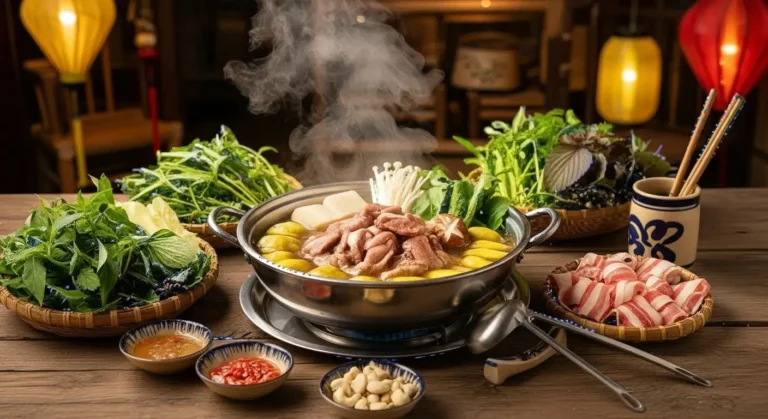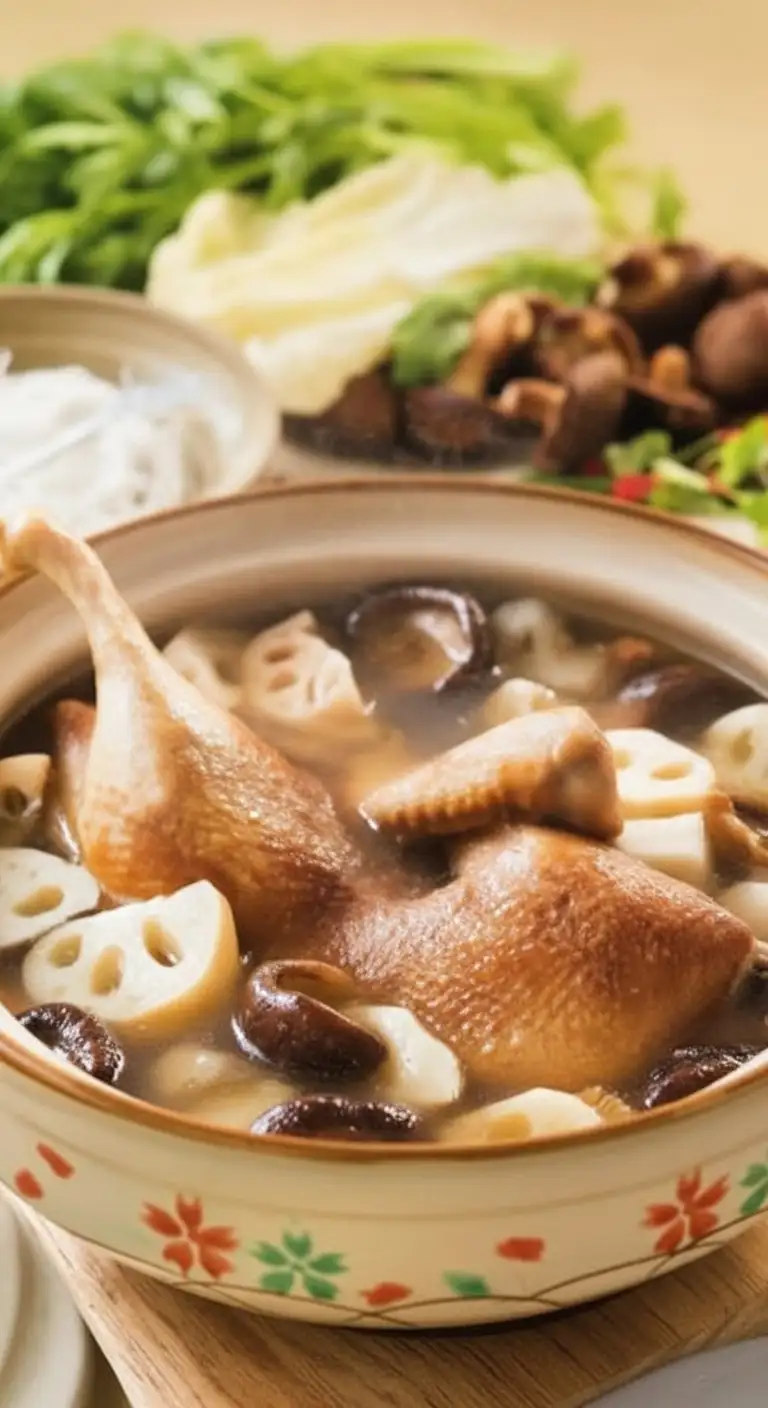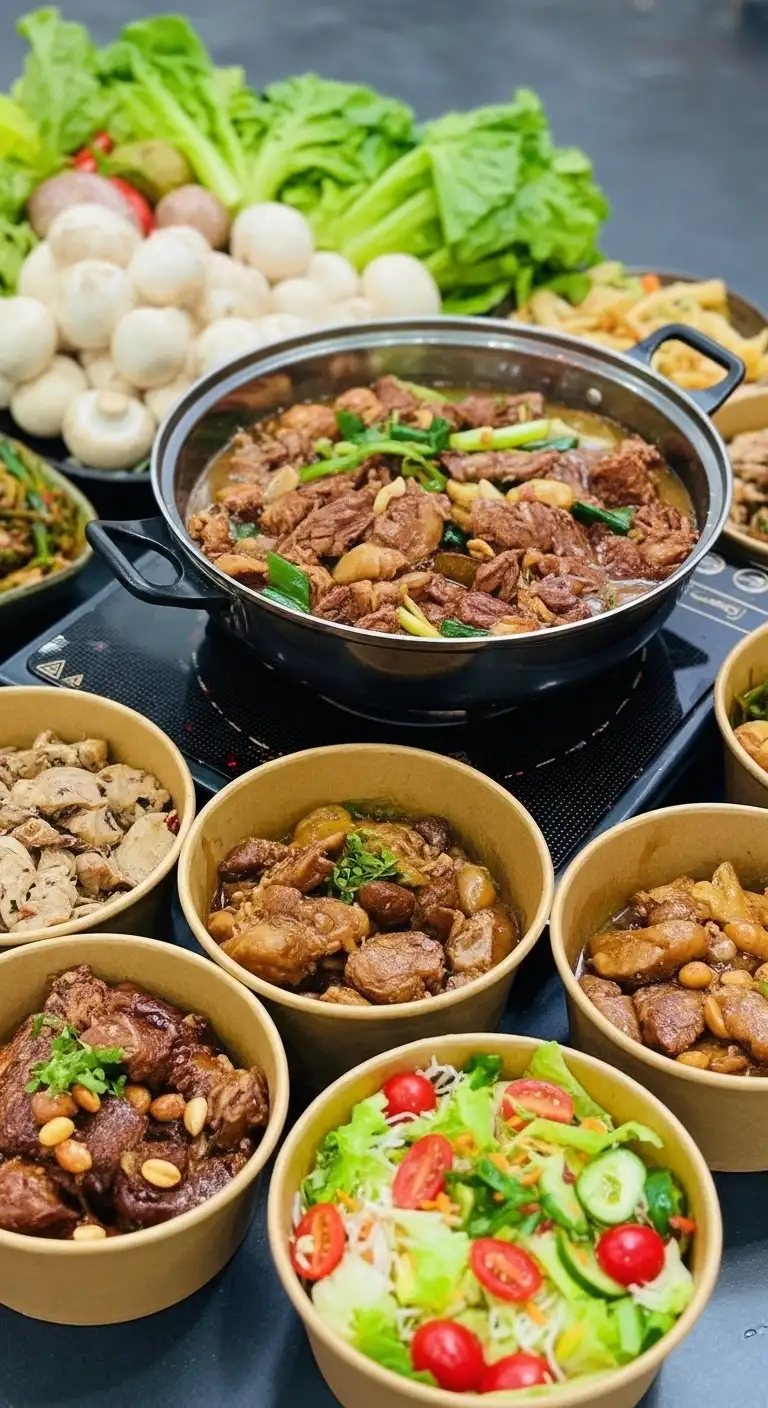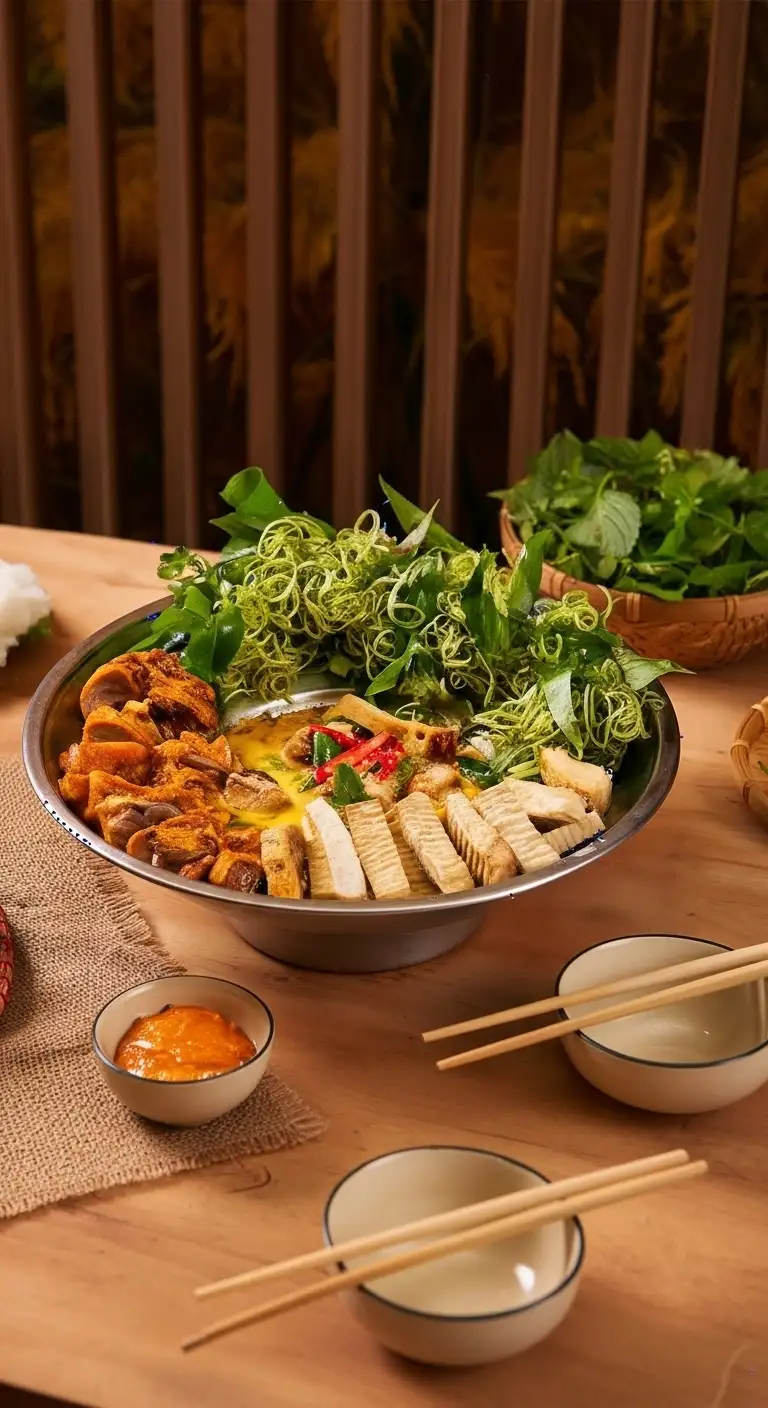Lẩu Vịt (pronounced Low Vit), or Duck Hot Pot, is a celebrated communal dish in Vietnamese cuisine, treasured for its rich, flavorful broth and tender, gamey duck meat. Unlike lighter hot pots, Lẩu Vịt is known for its depth of flavor, often achieved by braising the duck with aromatics and unique ingredients like fermented bean curd or sour fruits. It’s a perfect warm meal, particularly popular during cooler seasons.
Basic Information on Lẩu Vịt
What is Lẩu Vịt?
It is a traditional hot pot where the main protein is duck (vịt). The duck meat is typically cooked in a rich, complex, and savory-sour broth, often accompanied by root vegetables like taro and leafy greens.
The Broth (Nước Lẩu Vịt):
The broth base is made from duck and/or chicken bones, simmered with ingredients like ginger, lemongrass, and sometimes a souring agent. The resulting stock is rich, aromatic, and savory, with a slight gaminess from the duck that is counteracted by fresh herbs.
Key Components:
Duck Meat (Thịt vịt): Cut into bone-in pieces, the duck is often marinated and partially cooked before being placed in the hot pot. It’s prized for its rich flavor and tender texture after being simmered.
Aromatics & Roots: Ginger and lemongrass are essential for neutralizing the duck’s gamey flavor. Taro root (khoai môn) is a common addition, which lends a creamy starchiness to the broth as it cooks down.
Vegetables & Noodles: Served with an array of fresh greens (water spinach, mustard greens) and vermicelli rice noodles (bún).

Varieties of Lẩu Vịt
The types of Lẩu Vịt are defined by the unique ingredients used to flavor the duck and the broth:
Lẩu Vịt Nấu Chao (Duck Hot Pot with Fermented Bean Curd):
This is arguably the most famous and distinctive version, originating primarily from Southern Vietnam. The key ingredient is fermented bean curd (chao), which gives the broth a milky, creamy, savory, and highly aromatic depth, often with a hint of sweetness. The chao also serves as the main dipping sauce.
Lẩu Vịt Om Sấu (Duck Braised with Dracontomelon Hot Pot):
A classic Northern specialty, particularly associated with Hanoi. The broth is flavored with dracontomelon fruit (quả sấu), a sour, tangy, and slightly tart fruit that brightens the richness of the duck and makes the hot pot a popular choice even during warmer months.
Lẩu Vịt Măng Chua (Duck Hot Pot with Sour Bamboo Shoots):
Similar to the frog hot pot, this version features fermented sour bamboo shoots (măng chua), which contribute a robust, sharp sourness to the broth, cutting through the fattiness of the duck.
How to Eat Lẩu Vịt
Eating Lẩu Vịt is a deeply comforting and interactive dining experience:
Broth and Meat: The hot pot, already containing the marinated, bone-in duck pieces and main flavoring agents (like taro or chao), is brought to the table on a portable burner and kept simmering.
Cook the Add-ins: Diners add the accompanying raw vegetables, starting with the heartier ones (like taro or cabbage) first, followed by quick-cooking greens (like water spinach). The goal is to cook the vegetables just until they are tender-crisp.
The Dipping Sauce:
For Lẩu Vịt Nấu Chao, the essential sauce is the chao itself, served separately and mixed with chili and sugar to temper its saltiness.
For other versions, a mix of ginger, fish sauce, chili, and lime juice is the traditional condiment, offering a savory-spicy kick.
Final Dish: The cooked duck, vegetables, and hot broth are scooped into individual bowls and eaten with vermicelli rice noodles (bún). The noodles soak up the rich, complex broth, creating a highly satisfying final course.

Regional Differences in Lẩu Vịt
The fundamental differences in Lẩu Vịt mirror the general culinary distinctions across Vietnam’s three regions, primarily in the chosen souring agent and flavor intensity:
| Region | Broth Characteristic & Flavor Note | Signature Lẩu Vịt Variant | Key Difference |
|---|---|---|---|
| North (Hanoi) | Aromatic, Savory, and Sour. Broth is often clear, light, and focuses on balancing the duck's richness with a clean, fruity tang. | Lẩu Vịt Om Sấu: The use of quả sấu (dracontomelon) is quintessentially Northern, providing a distinctly tart and clean sourness. | Subtle sweetness; flavors are balanced and not overly dominant, reflecting the Northern preference for refinement. |
| Central (Huế, Đà Nẵng) | Spicy, Bold, and Rich. The broth is more concentrated, stronger in flavor, and features a prominent chili heat. | Lẩu Vịt Măng Chua/Sa Tế: Often features a sharp sourness from bamboo shoots (măng chua) or a strong spiciness from chili/satay paste (sa tế). | Emphasis on heat; the taste is stronger and spicier to align with Central Vietnamese culinary traditions. |
| South (Saigon/Mekong Delta) | Sweet, Rich, and Creamy. Flavors are richer and usually feature a distinct sweetness, characteristic of Southern cuisine. | Lẩu Vịt Nấu Chao: The creamy, aromatic, and savory fermented bean curd (chao) broth is the most popular, often enriched with coconut water and taro. | Sweetness is prominent; the broth is generally sweeter and uses coconut milk or sugar more liberally than the other regions. |




